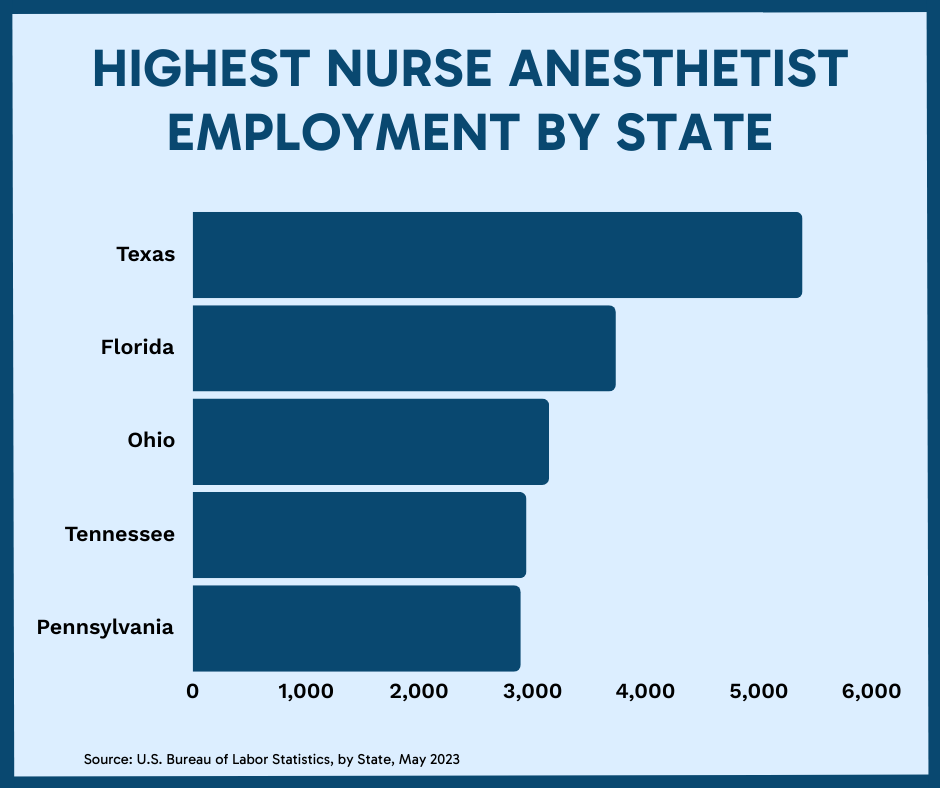Other New Programs
The Council on Accreditation of Nurse Anesthesia Educational Programs reports there are 140 accredited nurse anesthesia programs and fellowships across the U.S. and its territories as of March 2024. Not to mention a dozen programs expecting on-site visits in fall 2024 for spring 2025 accreditation.
The University of Texas Health Science Center at San Antonio is among the institutions that will welcome its first students in 2024. Its first BSN to DNP-Nurse Anesthesia Program cohort begins this fall.
“Job opportunities for CRNAs are likely to be excellent as they will be in high demand, particularly in medically underserved areas such as inner cities and rural areas,” Alison R. Peterson, DNP, CRNA, director of the CRNA program at the School of Nursing, said in a news release. “This is especially relevant in Texas, home to the largest rural population of any state. In rural areas, there sometimes is only one anesthesia provider for several counties.”
Fairfield University recently received approval to expand its Doctor of Nursing Practice (DNP) – Nurse Anesthesia program to Austin, Texas.
And Ohio University announced in March its new program in partnership with OhioHealth Grant Medical Center. Its first cohort will begin this fall.
Meanwhile, the first nursing anesthetist program for Nevada was expected to begin in July at Roseman University and Idaho State University is in the process of establishing the state’s first CRNA program. At the University of Louisville, a CRNA program began last August.
By the Numbers
U.S. Bureau of Labor Statistics employment projections show that by 2032 there will be 53,800 anesthetists, or a 9% change from 2022.
There are more than 61,000 nurse anesthesia professionals in the U.S., according to the National Board of Certification and Recertification for Nurse Anesthetists’ 2023 Annual Report. Of those, more than 2,800 began their careers in 2023 alone.

Texas currently has the highest nurse anesthetist employment level at 5,390 with an annual mean wage of $216,280, BLS data shows. Nationally, the median annual wages for a nurse anesthetist in May 2023 were upwards of $212,000, with outpatient care centers offering the highest pay.










